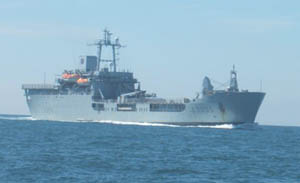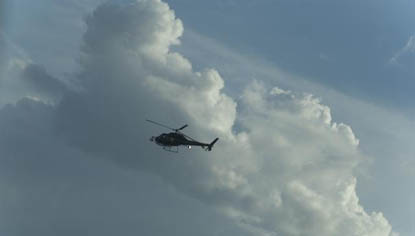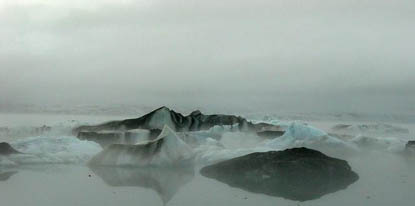Northwest Passage
Northwest Passage
 Of course I didn’t kill her; I just helped her along the way. The Court agreed and so did the General Medical Council. After the trial I went back to work but many of my patients asked to transfer to another doctor. After a ‘little talk’ with the Senior Partner, I found myself unemployed for the first time since I’d graduated.
Of course I didn’t kill her; I just helped her along the way. The Court agreed and so did the General Medical Council. After the trial I went back to work but many of my patients asked to transfer to another doctor. After a ‘little talk’ with the Senior Partner, I found myself unemployed for the first time since I’d graduated.
They bought my resignation with six months’ pay. I bought a round the world ticket and visited all the people who send me Xmas cards. When I returned to Glasgow, tanned and broke, no one wanted to hire me for general practice. I was too young to retire but too old to retrain.
A friend showed me the advertisement: ship’s doctor on a freight carrier; Health Service pay scale; good pension; plenty of shore leave. I asked for further details.
But this story isn’t really about me.
The ship ran from Belfast to Vladivostok. The Company carried heavy cargo for a regular customer. For most of the year, the ship went through the Panama Canal and straight across the Pacific via Honolulu. In June and July, when the ice melted, the ship took the Northwest Passage along the top of mainland Canada, shaving a third off the route.
The ship also carried passengers; wealthy people who had tired of the usual exotic holidays. The summer run was particularly popular. The passengers paid well but were often elderly and of uncertain health. A ship’s doctor offered some reassurance, both to them and to the Company.
At the interview I told them that I hadn’t been to sea since losing my breakfast between Lerwick and the Out Skerries. They laughed and said that their ship was just a wee bit bigger than a tank landing craft. They changed the subject when I asked what sort of cargo they carried.
They offered me the job. I suspect that they had no other candidates. I locked my things in the box room and let the flat. Then I took the train to Stranraer and the ferry to Belfast.
The ship was smaller and shabbier than I’d expected. She had been modified for work in the high Arctic. The hold was fully enclosed and sub-divided with pressure bulk-heads. The hull had been reinforced and the bows extended to ride up onto ice.
But this story isn’t really about the ship.
The crew had been together since the Company was formed. I suspected that they were all shareholders. While they seemed to have little else in common, they lived and worked together through that strange telepathy of the consensual routine. They were guarded with me and I with them. I felt that my status was like that of a Victorian tutor; neither servant nor family.
There was accommodation for up to twenty passengers. The facilities were basic but the catering was excellent. The cook had trained with British Rail, in the days of the silver service dining car, and knew all about preparing reliable food in confined, moving spaces.
They gave me two cabins to myself; one to sleep in and one for surgeries. My bedroom was cramped but I hadn’t brought much with me; just a suitcase full of clothes and a bag full of books. The other cabin had a couple of chairs, a cabinet for basic medicines and surgical instruments, and a consulting bench which doubled as an operating table.
The first voyage, through the Panama Canal, was almost uneventful. The ship was mostly at sea, only stopping to refuel, and to pick up and drop off passengers. Life on board was quiet, most unlike the frenetic cruises one reads about in the travel supplements. The ship was small and the only public spaces were the dining room, lounge and upper deck. People were polite but circumspect. Meals were amiable but not animated.
I wasn’t used to passing so much time in the company of my patients. I could hardly avoid the passengers unless I kept to my cabin. It would have been more comfortable if I could have avoided them. Like the crew, the passengers were guarded with me, but for different reasons. Doctors are privy to secrets that you don’t want friends or colleagues, let alone casual acquaintances, worrying about. When I first joined the ship I advertised regular surgery hours but I soon found that the passengers preferred to approach me when no one else was about.
But this story isn’t really about these passengers.
Most days were fine, so after breakfast I would settle myself out of the wind on the upper deck and read. I soon exhausted most of the books I’d brought, and the ship’s small library of block busters didn’t last much longer.
Finally, I turned to the Universal Encyclopaedia of Arctic Myths and Legends, which my friend had given to me as a parting present. The Encyclopaedia was certainly comprehensive. As well as detailed accounts of Arctic peoples’ beliefs, it also covered the Arctic in Western myth. I already knew about older legends like the Ice Giants of the Norse sagas but I was intrigued by the Hollow Earth Theory. This peculiar idea holds that there’s another world beneath the earth, with entrances at the North and South poles, and a second sun at its centre; a hidden realm of cosmic power and eternal youth. According to one story, Nazi occultists searched for the Arctic entrance to the Hollow Earth before the Second World War. According to another story, they were trailed by a British Naval officer, whose secret report to the War Office was never made public.
When we got back to Belfast, I returned to Glasgow for a couple of weeks break before the next trip. I spent much of it browsing for second hand books. In a shop off University Avenue, I found a small case full of accounts of polar expeditions and bought them all.
The second voyage, in early June, took the Northwest Passage. After stops in Rekjavik and Thule to drop off passengers, we headed north through the Davis Strait into Baffin Bay.
The high Arctic proved disappointing. During daylight hours, the seaways were often hidden by dense fog. There was little wild life apart from the howling sea birds that followed the ship. Nonetheless, the passengers seemed delighted. Every evening, if the fog cleared, they gathered on the deck to photograph yet another pristine glacier lit by yet another multi-hued sunset. No one seemed to notice the dismal settlements huddled against the cliffs: corrugated iron huts clustered round a radio mast; dumps full of decaying packing cases and rusting caterpillar tractors; inhabitants unresponsive to the cheery waves of the passengers.
We crossed Baffin Bay and turned west into Lancaster Sound, hugging the coast. Although it was summer it was cold out of the sun, so I spent much of my free time in my cabin reading about polar exploration. The utter incompetence of British explorers contrasted strongly with the patient professionalism of the Scandinavians. Tennyson wrote, of that supreme survivor Ulysses, ‘To strive, to seek, to find, and not to yield’. As we retraced the route of Amundsen’s triumph and Franklin’s downfall, this seemed a most ironic epithet for Captain Scott’s Antarctic gravestone.
But this story isn’t really about these explorers.

After a brief call at Resolute, we berthed at Cambridge Bay on the southern coast of Victoria Island. Cambridge Bay has remarkably good facilities, thanks to the US Distant Early Warning Centre and Canadian taxpayers’ guilt. There’s a health centre and a dental clinic, a school and a branch of the Arctic College, and a well equipped community hall. Three Christian churches compete with two licenced hotels for the souls of the 2000 inhabitants: Cambridge Bay is one of the few places north of the Canadian Arctic Circle where alcohol is on public sale.
As in much of the old British Empire, the native peoples and incomers seemed to live in parallel worlds. The Inuit I encountered in the stores were courteous, but distant once they realised that I had no interest in intricately carved tusks of protected species. The whites I talked to in the public buildings were much more voluble but I soon began to recognise the types that I’d encountered in Papua New Guinea: the ambitious bureaucrat; the optimistic misfit; the baffled missionary; the cynical anthropologist.
But this story isn’t really about Cambridge Bay.
Before we left, two of the more memorable passengers disembarked. We were supposed to pick them up on the return journey. I wasn’t particularly sorry to see either of them leave and didn’t look forward to travelling home with them.
The first was a garrulous television producer from Darwin. He was researching a new reality show, where families who lived in distant parts of the British Commonwealth with the same name would exchange children for the summer holidays. The series was supposed to climax with an Arctic/Equator swap. He had already found a likely family on the Prince of Wales Island in the Torres Straits, and, undaunted by the lack of habitation on the Prince of Wales Island in Nunavut, was intent on head hunting in Cambridge Bay. He seemed to have little conception of the vast cultural gulf between the Torres Strait Islanders and the Inuit, or of the profound dislocation his young participants would experience.
The other person to disembark was a curt, wiry English woman, who kept apart from the rest of the passengers. When she first came on board, she had asked me about survival in Arctic conditions and had taken notes in a battered diary that was locked with a metal clasp. Once, I had found her diary in the dining room so I returned it to her cabin. On her floor were brass instruments, piles of nautical tables, and large scale maps of Victoria Island covered in triangulation lines. Intrigued, I had asked her why she had joined the ship; she told me bluntly to mind my own business.
We left Cambridge Bay and, after calling in at Kuglugtuk and Barrow, turned south through the Bering Straits and across the North East Pacific to Vladivostok.
Vladivostok was still recovering from the loss of the Soviet subsidy; its first world inhabitants trying to survive on third world incomes. On the last trip, my pockets had been picked in the Arsenyev Museum. This time I stayed on the ship.
The afternoon of our departure for Belfast, I had another browse at the ship’s library. Passengers often left books behind and I had vague hopes of finding something new. Amongst the familiar paperbacks, I was surprised to discover a first edition of Encyclopaedia of Arctic Myths and Legends. I was even more surprised to discover the curt woman’s initials inside the front cover.
There was a small file card sticking out from the book. The card contained brief hand written notes:
Quite wrong. Lapland too far south and east. Grandfather’s report pp12-15.
The card marked the section discussing the Nazi Hollow Earth expedition.
Puzzled and suspicious, I made a tawdry excuse and was let into the woman’s room by the purser. The room was bare, as if she had no intention of returning to the ship.
I sought out the captain and told him of my fears for the curt woman’s well being. He laughed and told me that the high Arctic often attracted New Age travellers, drawn by the secret wisdom at the end of the earth. The hard, dull Arctic life, and the unashamed pragmatism of the Inuit, soon drove them back to their semi-detached soliloquies. When I pressed the captain, he lost interest and told me to contact the Royal Canadian Mounted Police post in Cambridge Bay, once we were within range.
Three days later, as we entered Coronation Gulf, I called up the RCMP Superintendent, who humoured me and said that he would make enquiries. When we tied up in Cambridge Bay the following evening, the Superintendent was waiting on the pier, anxious to tell me what he had learnt.
As soon as she had arrived, the woman had paid cash for a brand new, two-seater snowmobile and immediately set off without registering her route. On the edge of the hamlet, she had dumped the snowmobile’s radio and rescue beacon. None of the local hunting co-operatives or tour operators had seen any sign of her since she left. The Superintendent wanted to mount a search party, but the helicopters were grounded until the freezing fog cleared.
The next morning, the Australian producer came back on board. He was uncharacteristically despondent, having failed to find participants for the finale of his show. In desperation, he had even tried to involve the local television station with promises of shared royalties, but they told him pointedly to leave. Amused, I asked the producer about the family he had found in the Torres Straits. He blanched and admitted that they were actually white friends of his from Sydney.
He then asked me to help him collect his luggage. As we walked into the hamlet, I told him about the missing woman. He became much more cheerful and said that her disappearance would make a highly marketable documentary.
Outside the RCMP post, the Superintendent was donning an orange survival suit. He told us that he was off to investigate a thin column of dense black smoke on the northern side of the island, which had just been reported by a commercial aircraft. He asked me to go with him in case there were any casualties: no one from the health centre was available. The producer insisted on coming as well.
I had never flown in a helicopter before and I didn’t enjoy it. I couldn’t judge our height in the featureless terrain, and the seemingly arbitrary pitch and yaw were deeply disorienting. The producer was in his element. He hosed his camera across the landscape, shouting enthusiastically into his headset’s microphone.

The smoke came from a badly damaged snowmobile that had pitched nose down into a deep crevasse. A body lay on the edge of the crevasse. The Superintendent clumsily landed the helicopter and we ran over to the body. It was the curt woman. She was still alive but badly burnt all over.
Suddenly the producer started to curse. In his haste, he had forgotten to put a spare cassette into the camera bag.
I ignored him and tried to assess the woman’s injuries. All the while, she kept making jerking motion towards her face with her clenched right hand. I gently prised open her fingers. She was clutching what looked like the key to her diary. I bent over her face and she whispered to me: ‘Help him, help him.’ Then she passed out. I was nonplussed by her plea. I far as I knew the woman was unaccompanied.
Then the Superintendent shouted from the far side of the wreck. He’d spotted another body pinned under the snowmobile. Astonished, I hurried across to join him. The body was face down in the snow. I knelt beside it and felt under the high fur collar of the parka. The body was still warm but there was no pulse. We lifted the snowmobile clear and turned the body over. It was that of a clean shaven young man with sandy hair. His neck had been broken in the crash. I checked his clothes for identification. Under the parka, he was wearing a thread-bare British naval uniform with tarnished buttons. All his pockets were empty.
The Superintendent drew me to one side. The fog was starting to descend and we needed to leave. I checked the woman again. Her heartbeat was slow and weak, and her breathing was increasingly laboured. We gently carried the woman into the helicopter. I wanted to bring her companion but the Superintendent said that the craft could barely manage the four of us.
By the time we reached the health centre, the woman was unconscious. We rushed her inside but she died as we tried to revive her. Sadly, I searched through her body bag, looking for details of next of kin. At the bottom of the bag was her locked diary. I opened it with the key. Tucked inside the cover was a faded black and white, passport-sized photograph of the sandy-haired young man we’d found out on the ice. On the back of the photo, in blue fountain pen, was written: ‘Broughty Ferry 1942′.
I wanted to recover the young man’s body but the ship’s departure had already been delayed. Back in Glasgow, I telephoned the Superintendent. He had returned to the crash site the next day but the wreck had been covered by drifting snow and there was no sign of the dead young man. No family had been located to claim the woman’s remains so she was going to be buried in Cambridge Bay. I asked the Superintendent to add her grandfather’s name to her head stone, above the words I had so churlishly sneered at: ‘To strive, to seek, to find, and not to yield’.

Photographs by Lyns (ship), Poxy (ice floes in iceland) and Gracey (helicopter).
Greg Michaelson’s debut novel The Wave Singer is available form Argyll Publishing. www.thewavesinger.com
© Greg Michaelson 2005

Comments